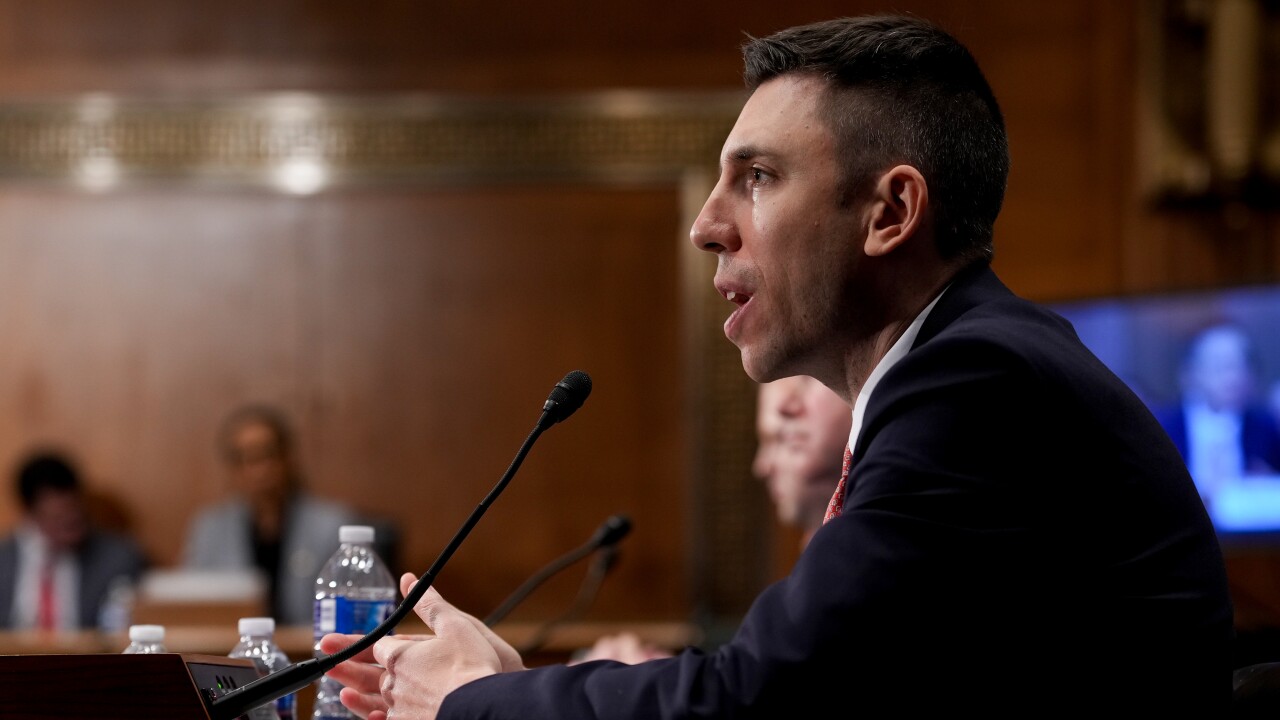BECU, a credit union in Tukwila, Wash., is planning to replace its entire automated teller machine fleet with a new model from NCR Corp. that will eventually be able to offer several advanced functions, including bill payment.
The credit union, formerly Boeing Employees' Credit Union, has just two traditional branches, and though its more than 40 financial centers have sales and customer service staff, they have no tellers.
It plans to replace its current fleet of 150 NCR ATMs with SelfServ machines, which NCR introduced last week. The first BECU order, for 50 machines, was announced this week, and BECU plans to replace 50 more in each of the next two years.
Shirley Taylor, a manager in the virtual banking channel for BECU, said in an interview Wednesday that because it has so few actual branches, quite frequently "the ATM is the teller."
The first part of the revamp is to deploy SelfServ machines that convert deposited checks into images, starting this summer. Only about 10% of the credit union's ATMs offer image deposits, Ms. Taylor said, and they can only handle one check per deposit.
The credit union will later add other enhancements, such as accepting multiple-check deposits and enabling people to request specific denominations when withdrawing cash.
BECU eventually expects to take advantage of the SelfServ machines' bill-payment features, permitting members to make cash payments for BECU loans, credit cards, and mortgages, though there is no timetable for doing so.
NCR, of Dayton, Ohio, said its new ATM line is a key part of its financial services growth strategy and the first major refresh of its offering in more than a decade.
Bill Nuti, NCR's chairman and chief executive, said on an earnings conference call Wednesday that when banks upgrade to image-enabled deposit, it will "help them to drive cost out of the branch and also help them from a consumer traction perspective," since customers are starting to notice this service and expect it.
JPMorgan Chase & Co. has also committed to buy SelfServ units.
Brian Bailey, the vice president of financial industry marketing for NCR, said in an interview that the SelfServ machines can recover from software failures, which dramatically reduces their downtime.
"Fifteen percent to 20% of basic failures can be attributed to these soft-failures," he said. With traditional ATMs, it can take two to four hours for a technician to reset the machine. SelfServ machines can be running again in less than 20 minutes, he said.
This is especially important for customers like BECU, which has few branches and relies on self-service technology, he said.
Consumers make more deposits at image-enabled ATMs, Mr. Bailey said. "Once a no-envelope deposit unit is installed, we're seeing deposit volume on that unit practically double on that unit within 60 days."
Mr. Nuti said that because image deposit can reduce costs, banks will be willing to upgrade their ATMs even if their budgets are strained elsewhere.
NCR's revenue in the fourth quarter rose 13%, to $1.52 billion, from a year earlier. Its net income dropped 55%, to $79 million, a reflection of the September spinoff of its Teradata Corp. unit.
For the year NCR's revenue rose 8%, to $4.97 billion, and its net income fell 31%, to $264 million.
Bob Meara, a senior analyst for the Boston market research firm Celent LLC, said that for NCR and its rivals, "the outlook for traditional ATMs is not too bright."
ATM transactions peaked in 2000 and have been declining ever since, he said. "It's just not been a growth opportunity for" financial institutions, he said.
However, nontraditional machines hold more appeal. "Image ATMs are able to influence users to do more than just withdraw cash," he said. "There's a lot of deposit-taking ATMs right now that few people use … consumers just don't trust putting their money in an envelope."





